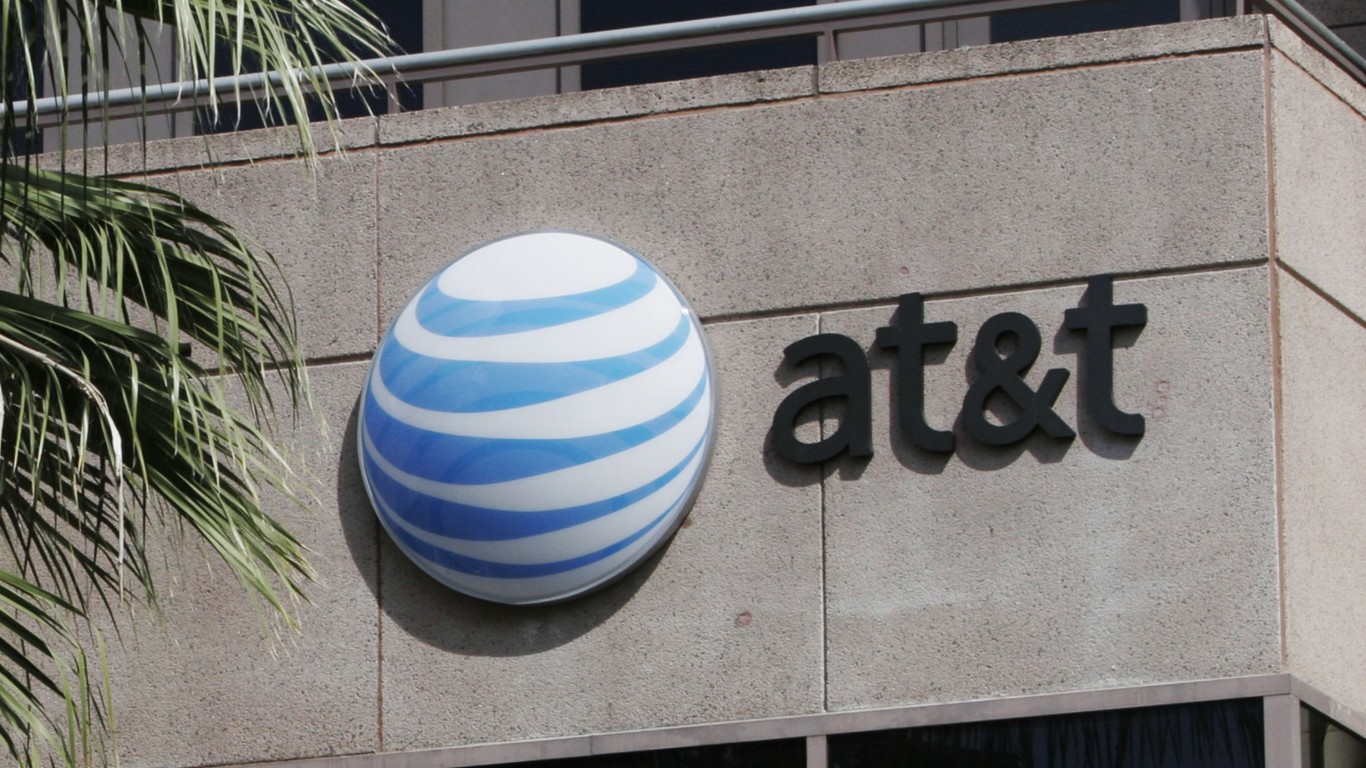Telecom & Wireless
AT&T Earnings Are Not What's Pushing Up the Share Price

Published:
Last Updated:

AT&T Inc. (NYSE: T) reported third-quarter 2019 results before markets opened Monday. The telecom giant reported adjusted diluted quarterly earnings per share (EPS) of $0.94 on revenues of $44.6 billion. In the same period a year ago, the company reported EPS of $0.90 on revenues of $45.7 billion. Third-quarter results also compare to the consensus estimates for EPS of $0.93 on revenues of $45 billion.
On a GAAP basis, the company reported quarterly EPS of $0.50, including $0.44 related to a noncash actuarial loss on benefit plans, merger amortization costs and expenses, and other costs.
Operating cash flow totaled $11.4 billion and capital expenditures totaled $5.4 billion in the quarter. Free cash flow totaled $6.2 billion.
The big news was the company’s announcement of its three-year financial outlook and capital allocation plan, which it expects to “drive significant growth in EBITDA margins and EPS, and allow the company to invest in growth areas, retire shares, and continue to pay down debt.”
CEO Randall Stephenson commented:
The strategic investments we’ve made over the last several years have given us the essential elements to meet growing demand for content and connectivity. Our 3-year plan delivers both substantial and consistent financial improvements over the next 3 years.
The financial outlook includes revenue growth of 1% to 2% in each year and an adjusted EBITDA margin of 35% by 2022. AT&T touts its cost-reduction plan, WarnerMedia synergies, continued wireless network growth and growth in Mexico as the drivers of its outlook.
The capital allocation plan includes “continued modest annual dividend growth” of less than 50% of free cash flow by 2022; share buybacks of about 70% of the stock issued to fund the TimeWarner acquisition; retirement of 100% of the debt left behind from that acquisition; and no “major acquisitions” along with a “continued disciplined review” of the company’s portfolio.
AT&T said it will “continue to refresh” its board of directors as two directors retire over the next 18 months, and it will add one board member at its next meeting and a second next year. The company did not say that the additions were a direct result of its talks with Elliott Management, but it’s hard to believe that it would have come up with this change on its own.
In return for the board expansion, Stephenson, who “will remain CEO through at least 2020,” commented on AT&T’s discussions with Elliott Management: “The objectives we have outlined today have been central to our plans for many months, even before we closed our acquisition of Time Warner. But, as you would expect, our thinking has also benefited from our engagement with our owners, including Elliott Management. I’ve found our engagement with Elliott to be constructive and helpful, and I look forward to continuing those con[vers]ations.”
The company did not provide fourth-quarter or fiscal year 2019 guidance but did say that adjusted EPS in 2020 would fall in a range of $3.60 to $3.70 (current consensus estimate is $3.62) and that by 2022, adjusted EPS would fall in a range of $4.50 to $4.80. The EPS outlook includes an investment of about $0.15 to $0.20 in HBO Max in 2020 and about $0.10 per share in 2021 and 2022.
Analysts are estimating fourth-quarter EPS at $0.89 on revenues of $47.4 billion and full-year 2019 EPS at $3.55 on revenues of $182.19 billion.
The revenue miss was more than offset by AT&T’s outlook and capital allocation plans. Presumably, Elliott Management is satisfied and a potential proxy fight has been avoided. AT&T’s stock traded up about 1.6% in Monday’s premarket, at $37.50 in a 52-week range of $26.80 to 38.75. The 12-month consensus price target on the stock is $36.50.
The thought of burdening your family with a financial disaster is most Americans’ nightmare. However, recent studies show that over 100 million Americans still don’t have proper life insurance in the event they pass away.
Life insurance can bring peace of mind – ensuring your loved ones are safeguarded against unforeseen expenses and debts. With premiums often lower than expected and a variety of plans tailored to different life stages and health conditions, securing a policy is more accessible than ever.
A quick, no-obligation quote can provide valuable insight into what’s available and what might best suit your family’s needs. Life insurance is a simple step you can take today to help secure peace of mind for your loved ones tomorrow.
Click here to learn how to get a quote in just a few minutes.
Thank you for reading! Have some feedback for us?
Contact the 24/7 Wall St. editorial team.